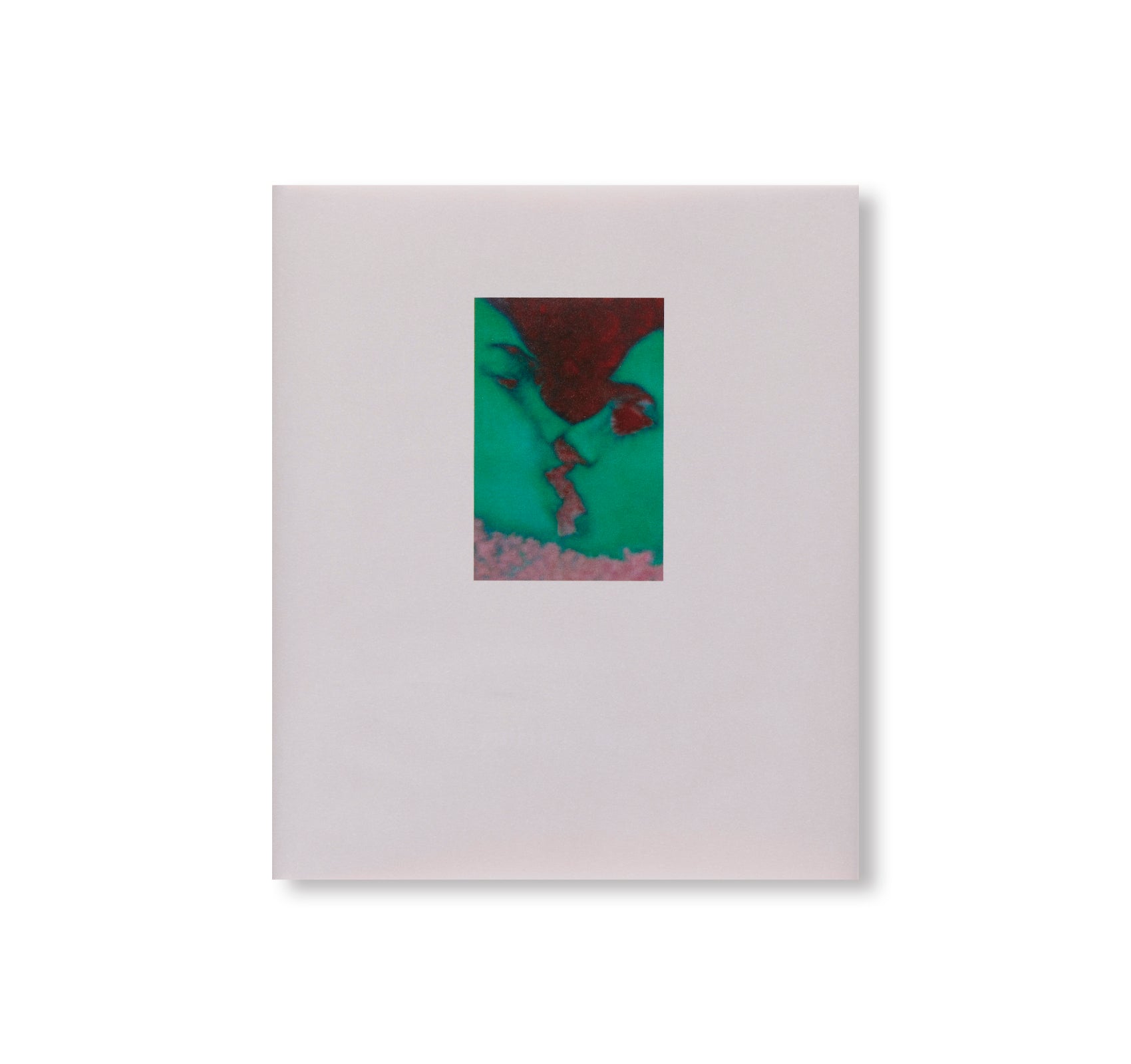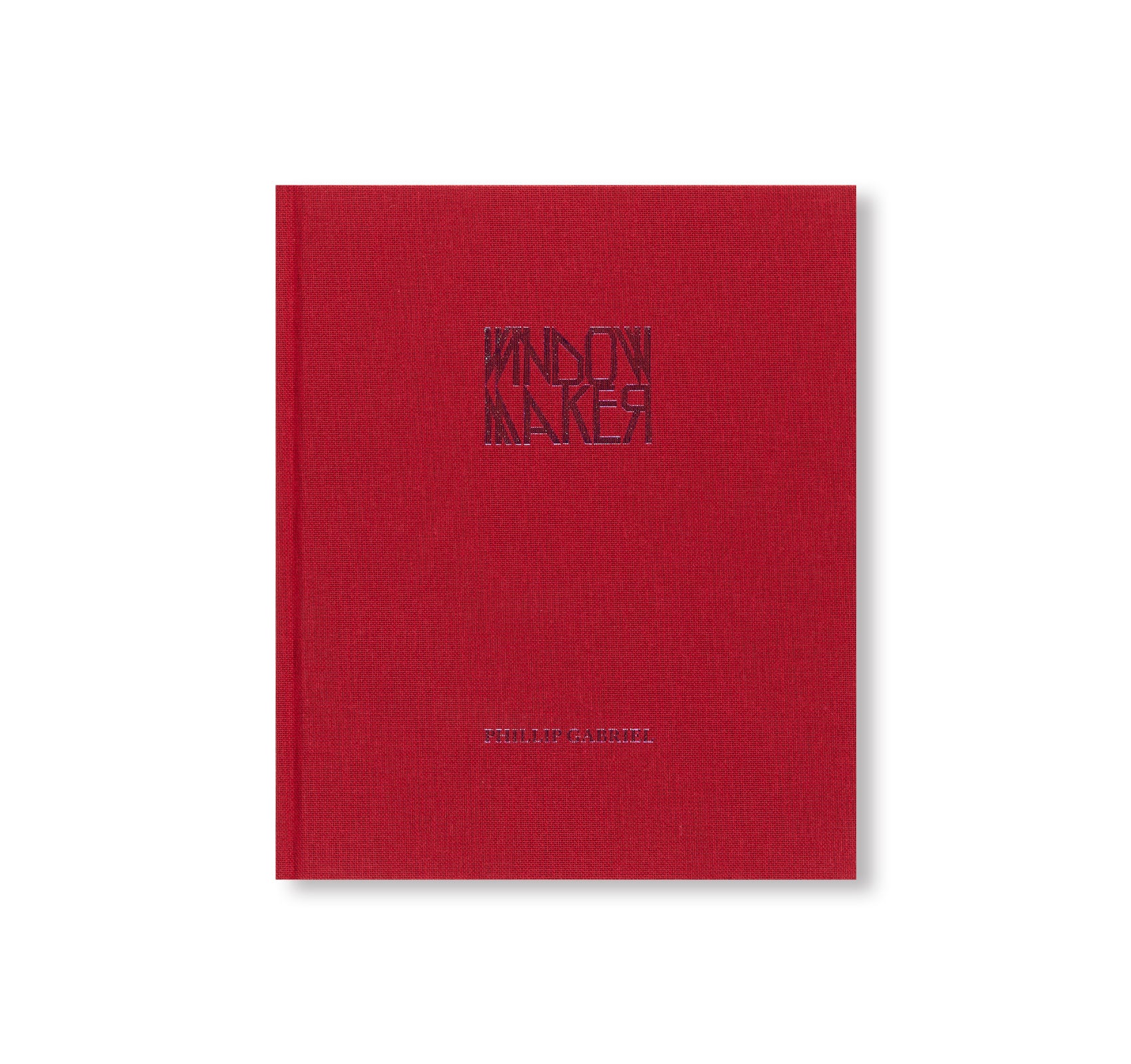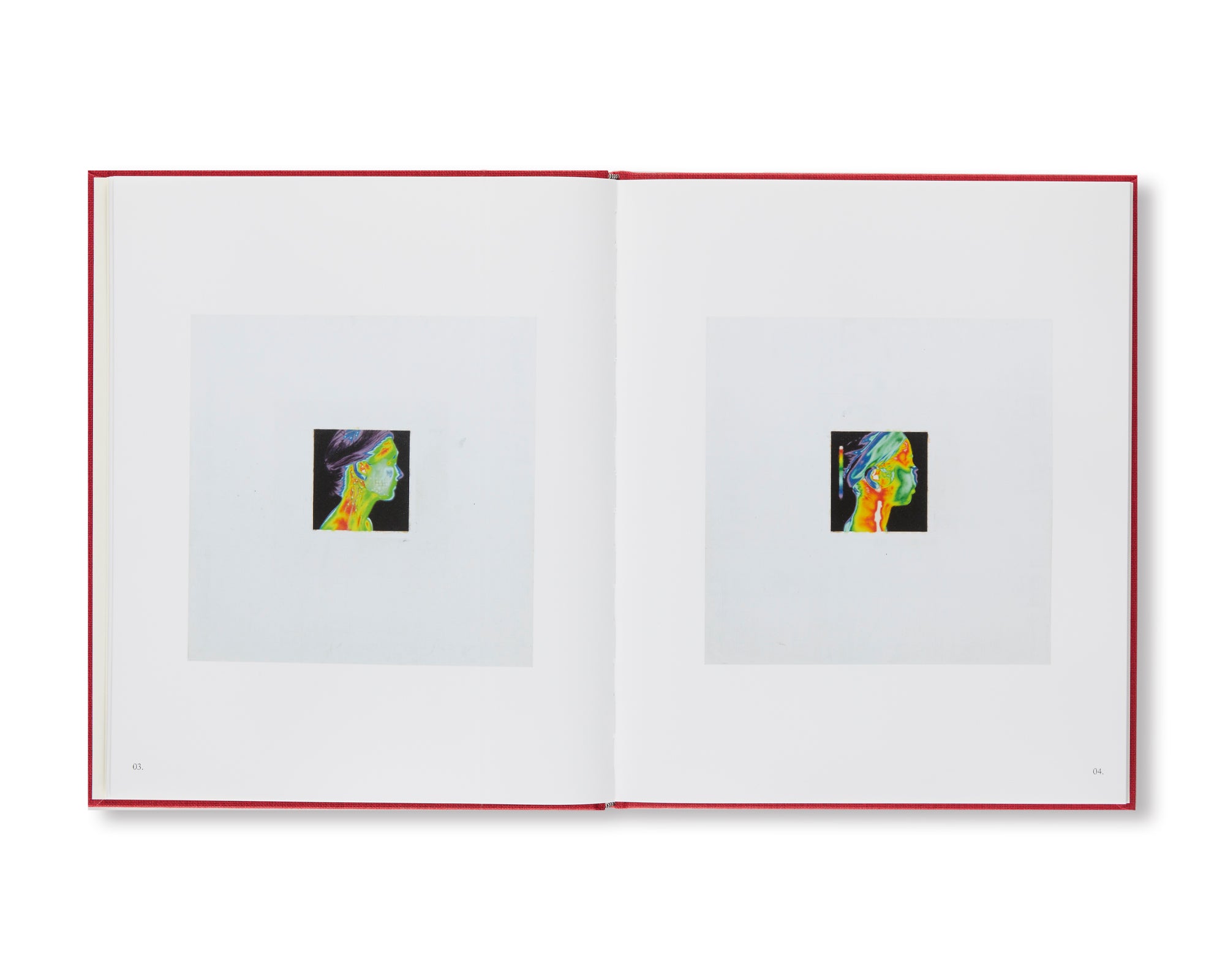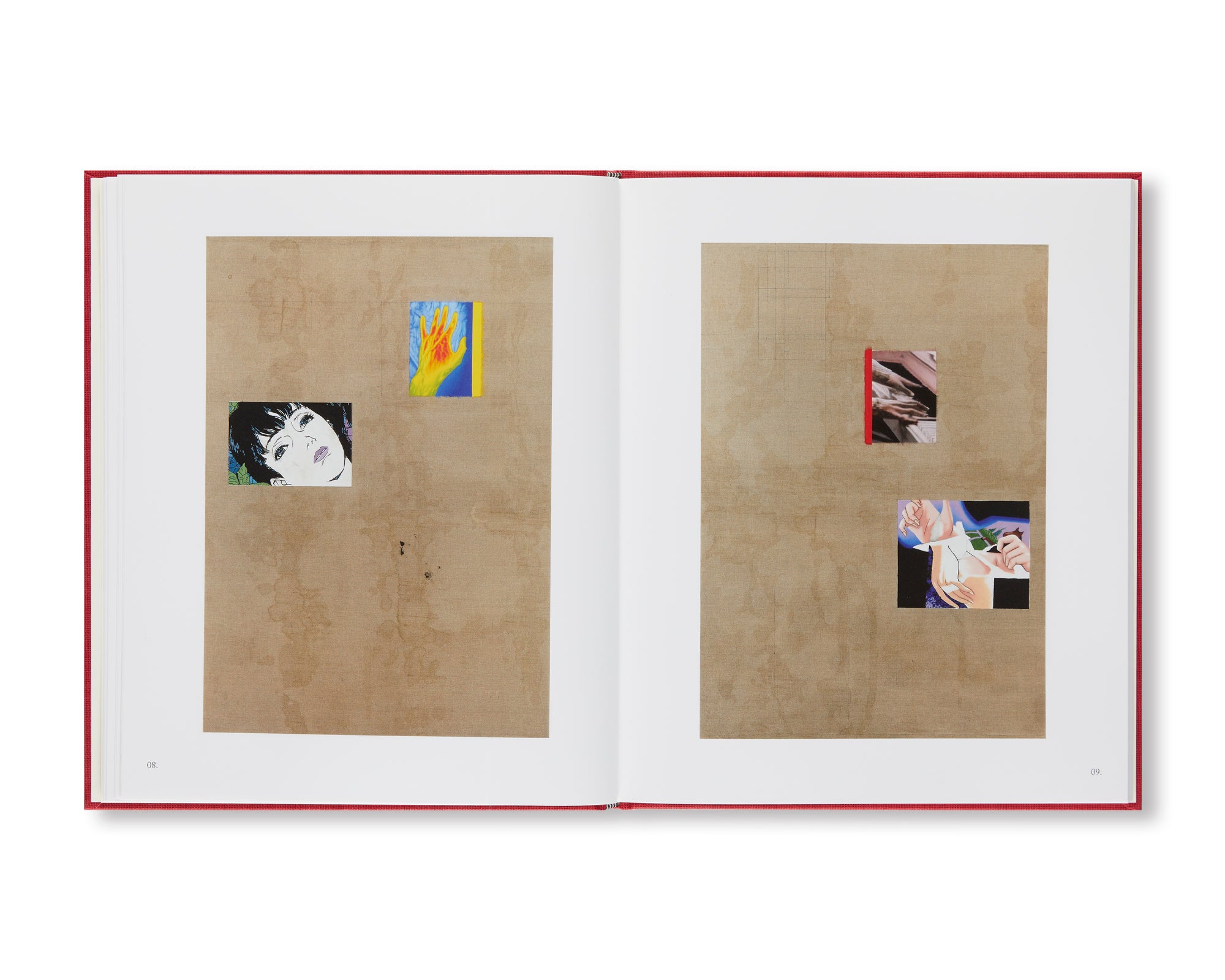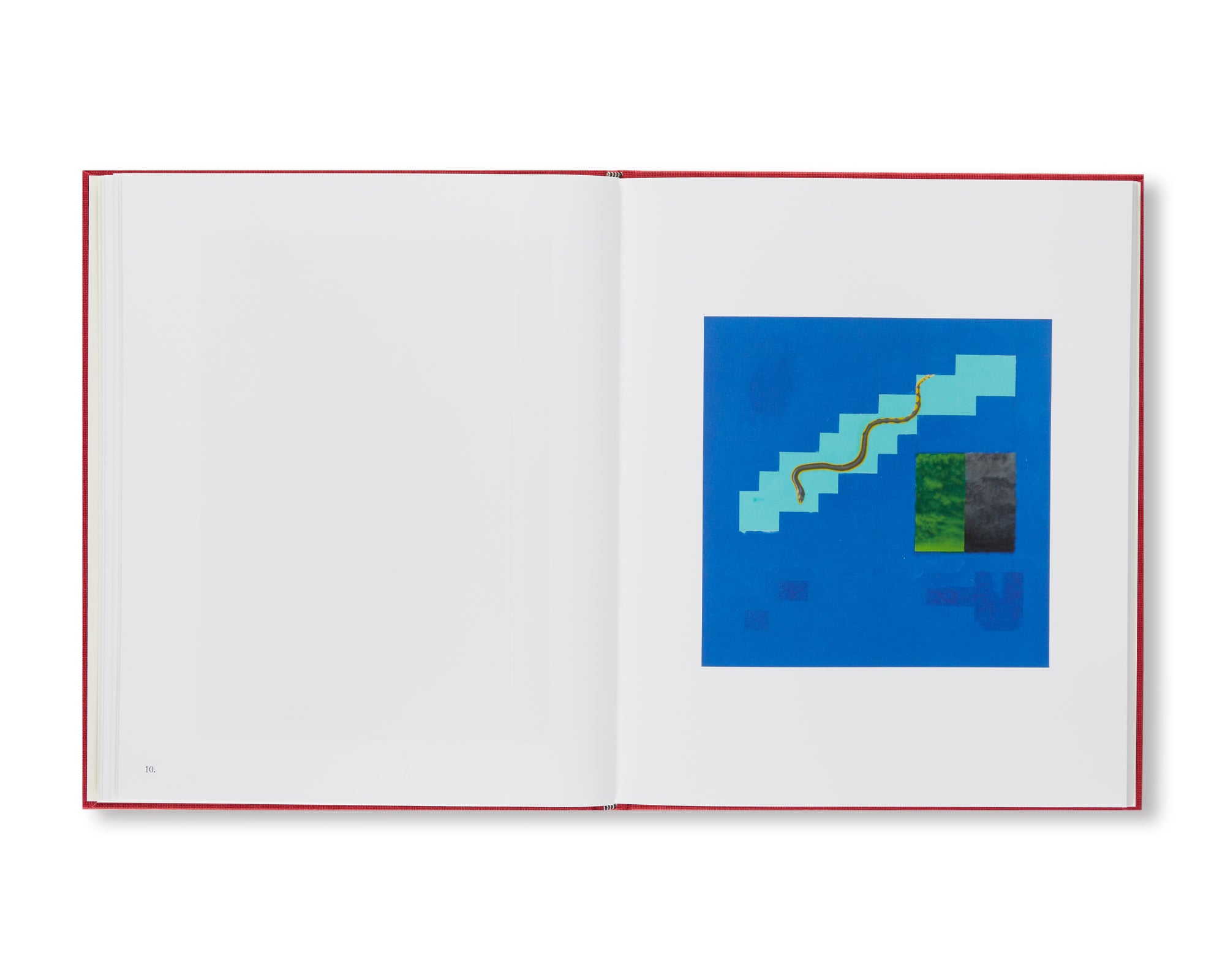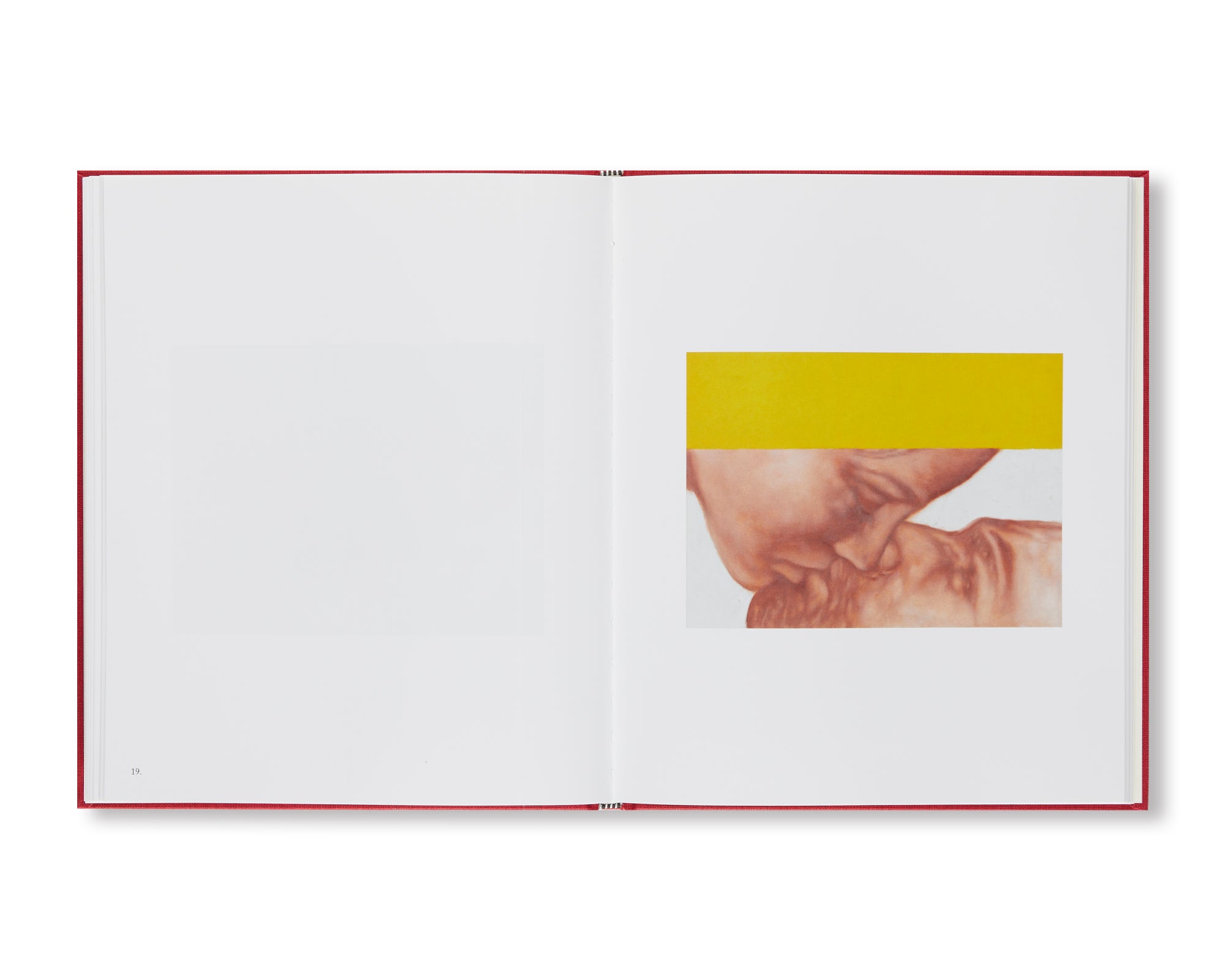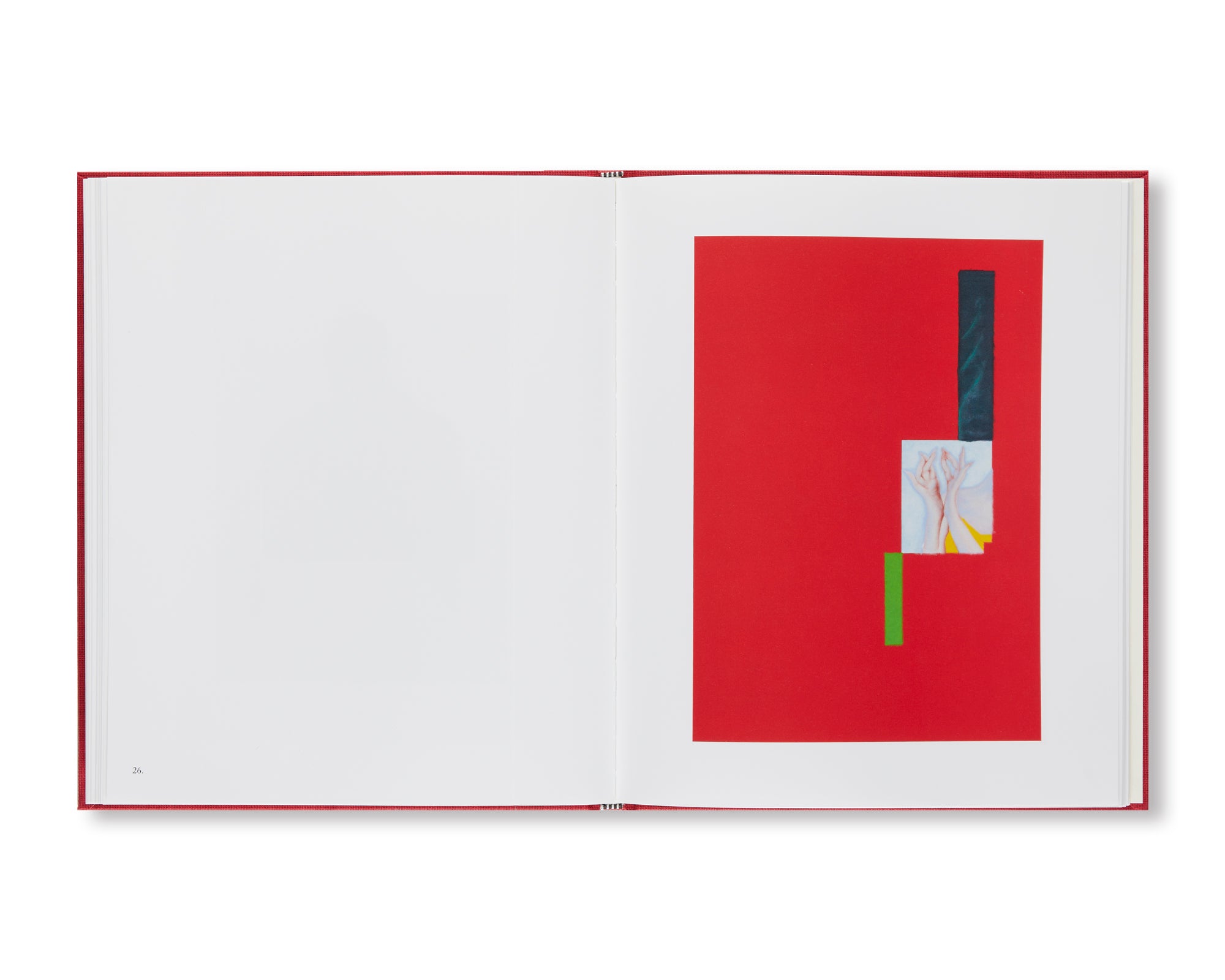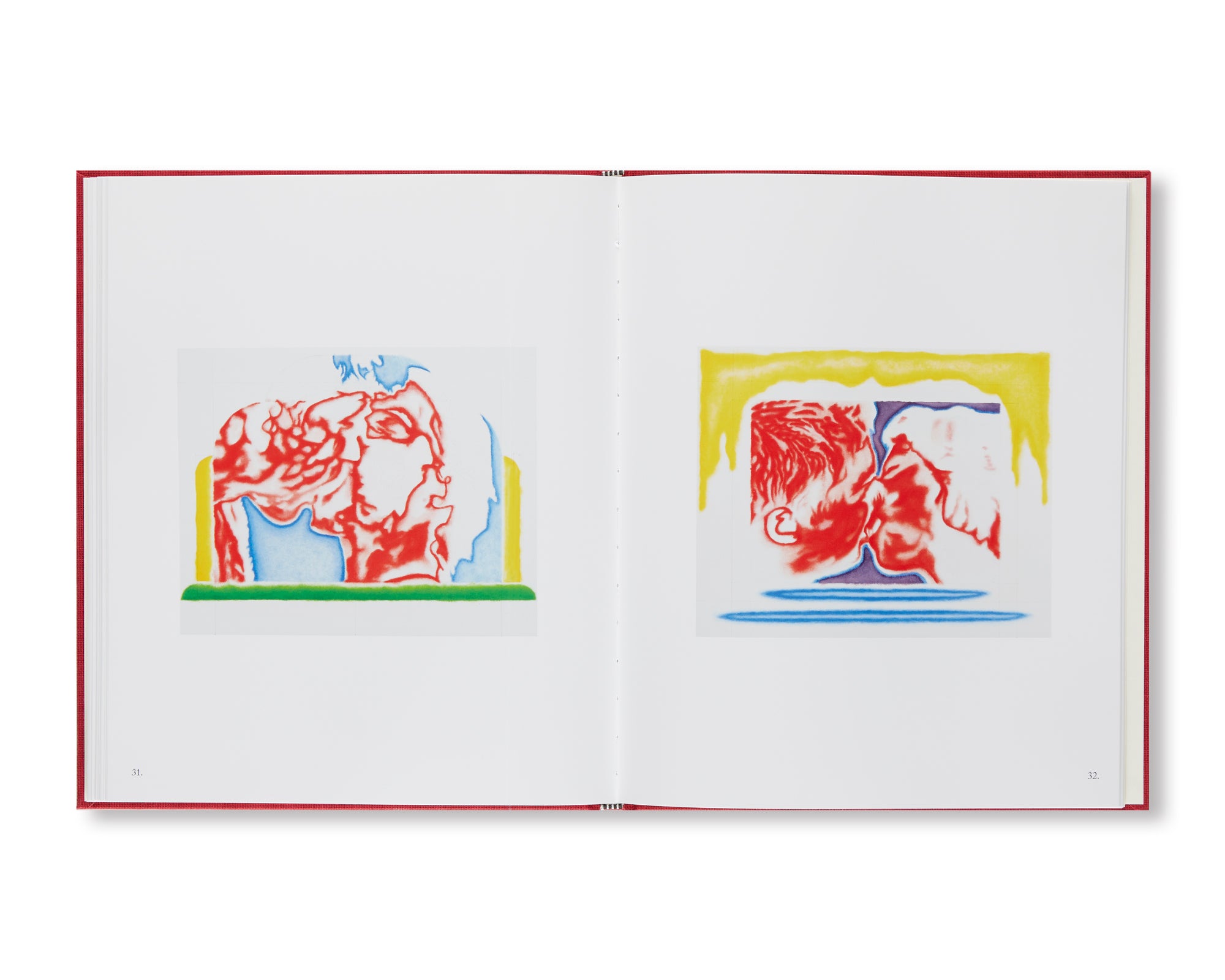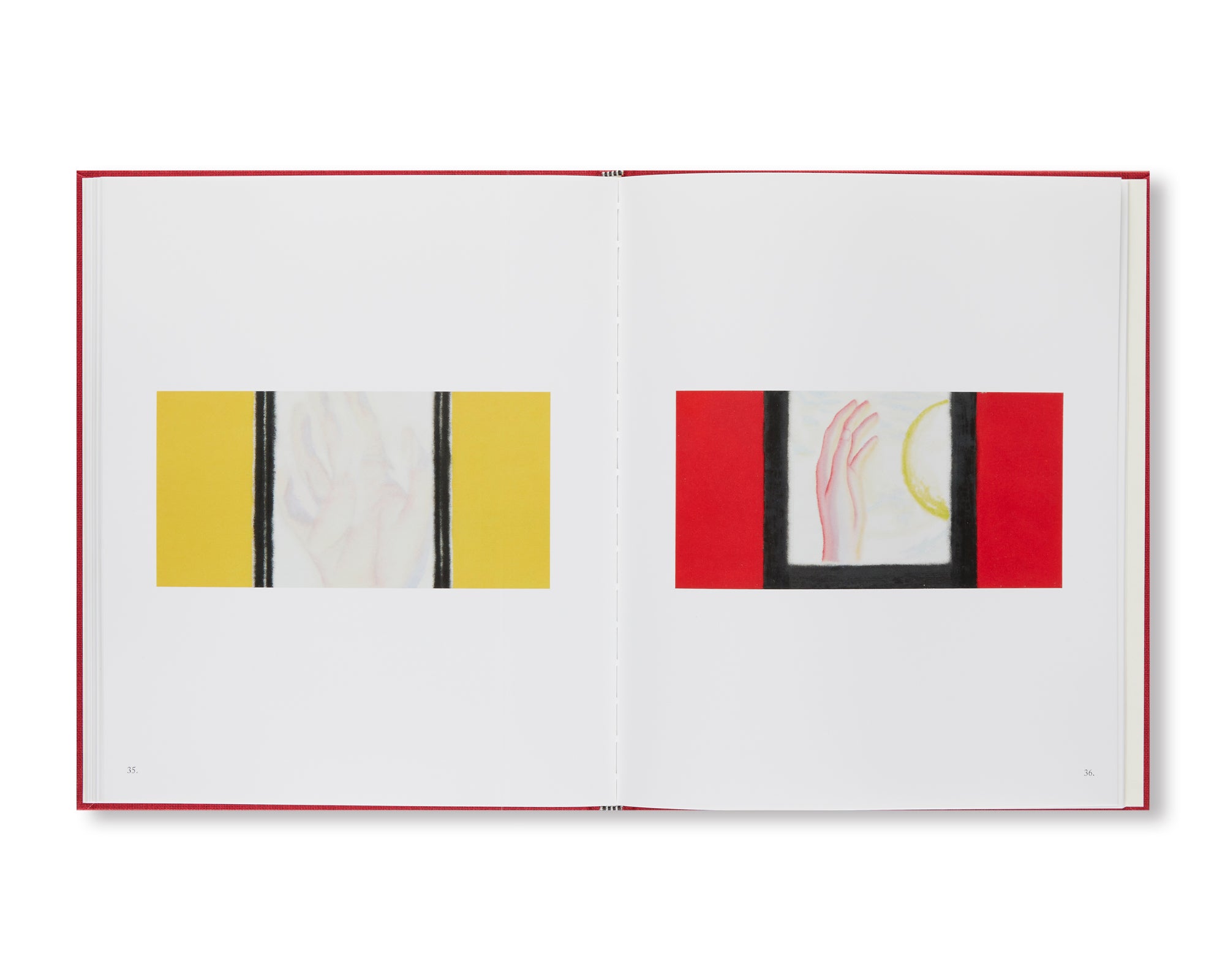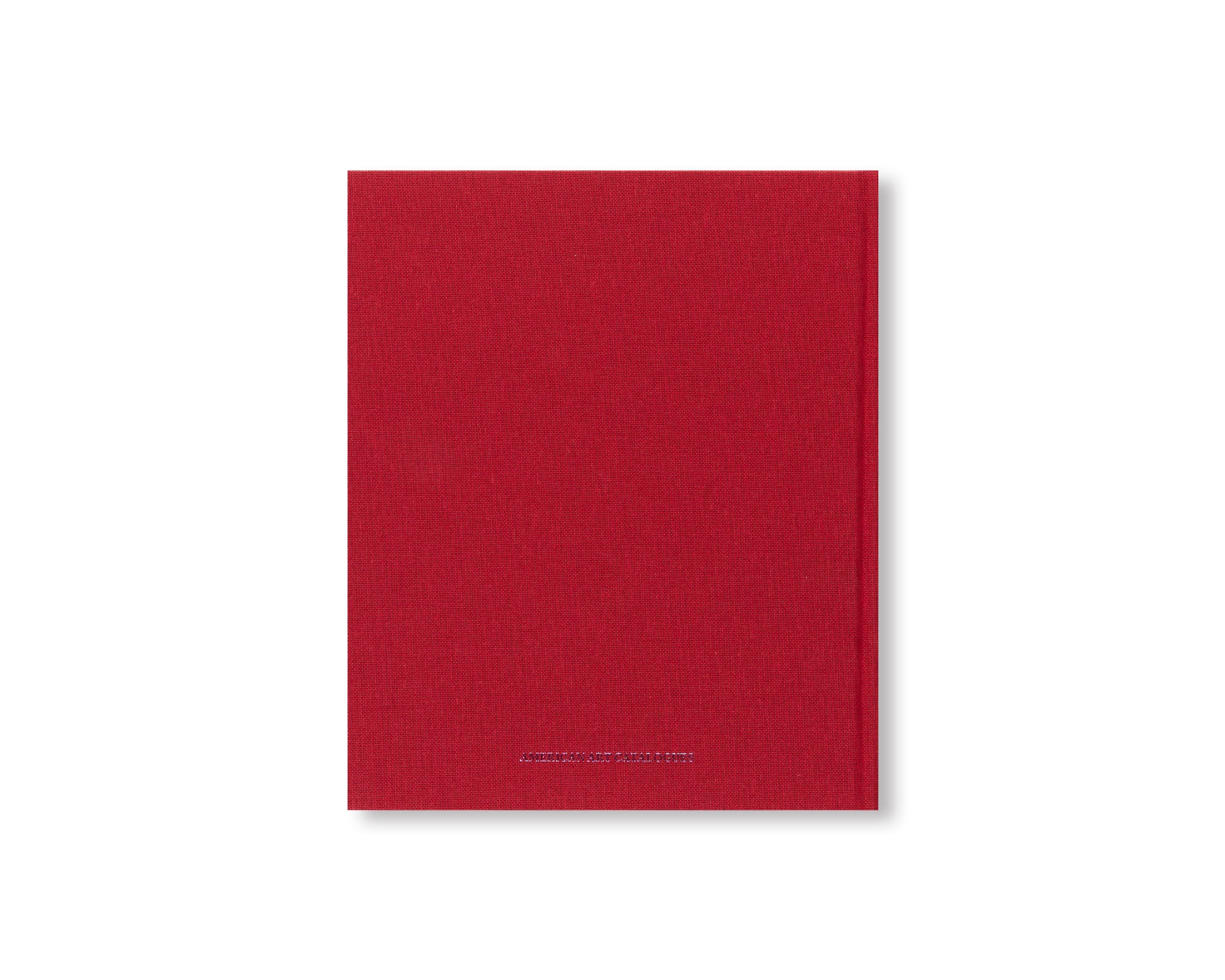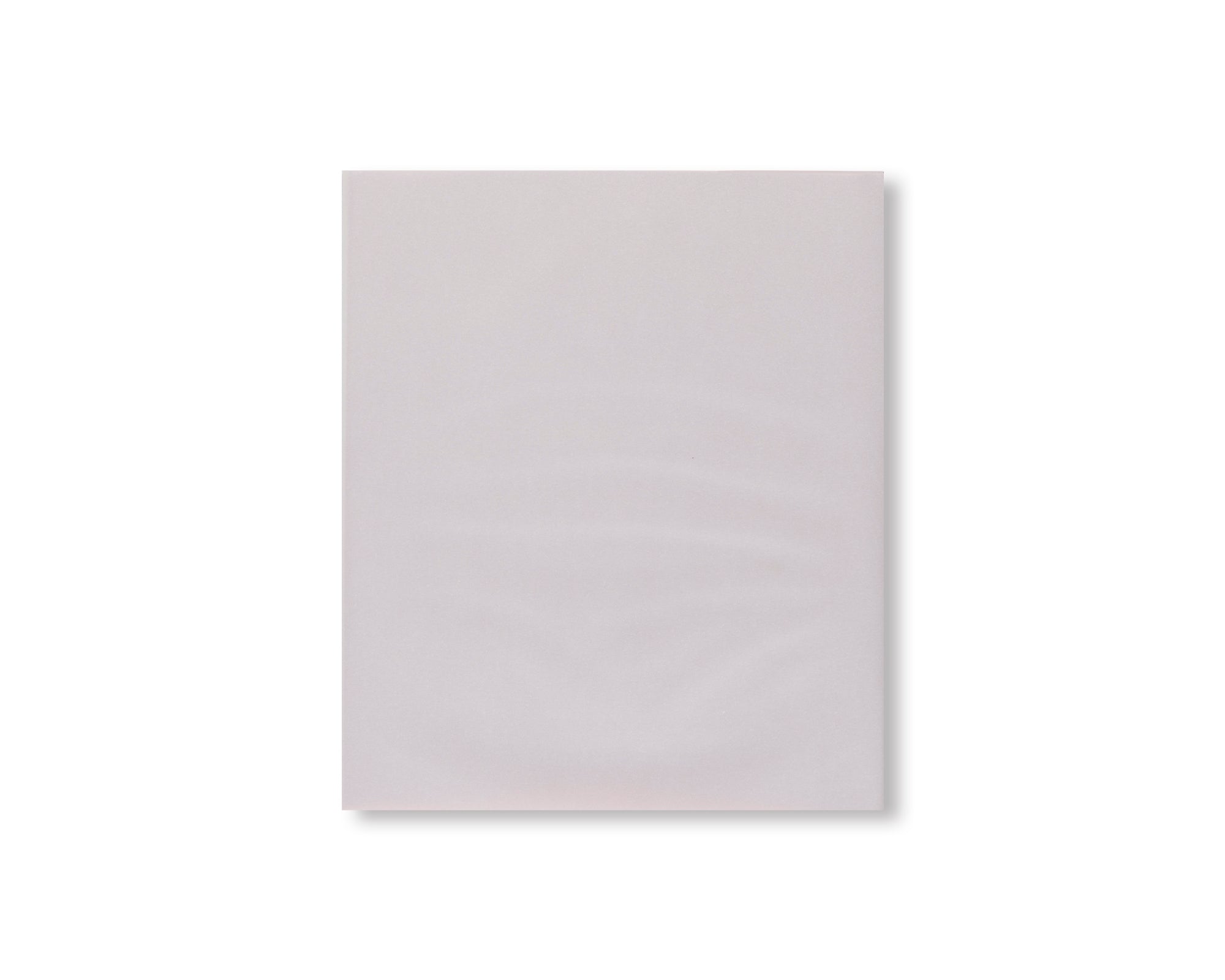WINDOW MAKER by Phillip Gabriel
ニューヨークを拠点に活動するフィリピン系アメリカ人アーティスト、フィリップ・ガブリエル(Phillip Gabriel)の作品集。本作は、作者にとって初の作品集となる。
作者の絵画は、目が覚めたら微かな過去の感覚の軌跡や感情を残してするりと消え去っていく儚い夢のように、刹那的な一瞬を閉じ込めた入れ物となる。不機嫌そうに揺らぐ雲の風景、仮面を被った顔、金属のピンで固定された手足、そんな描写はどこか懐かしく、見たことのあるようなものでありながら、しかしその正体を突き止めることはできない。シンボリックな性質ではなく、その特異な不明瞭さによって選ばれ、まるで天空から摘み取られたようなイメージの欠片たち。それは象徴的な力をもつものではなく、ある特定の区別を行うために選ばれた断片なのである。どこから来たのかという情報は、必ずしも全体の構成に意味を与えるものではない。むしろ、由来という概念はより深い混乱を引き起こす。オリジナルのリファレンスとしてある絵をなぞるため、作者はYouTubeを含む多数のプラットフォームで刈り取った素晴らしき低解像度のスクリーンショットの数々を忠実にレンダリングする。オリジナルもまたコピーであり、不正にアップロードされた圧縮ファイルである可能性が高い。その大元は他のどこかで誰かが制作したコンテンツを収集したものにすぎない。参照画像の解像度を絵具で巧みに再構築することで、作者はデジタルな方法であれ、フィジカルな出版物であれ、そこを通したイメージを拡散、流通する方法を強調している。作者の制作は、イメージが作用しているある種の浮遊世界を示し、「夢や記憶の焦点が合ったり、外れたりしている… これらの絵は出たり消えたりする靄を通して見られる窓やスクリーンのよう」であることを気づかせる。
作者は、既に印刷、配信や共有されているものなど、移動が生じるイメージを扱うが、それは必ずしも非歴史的な視点から制作を行なっているわけではない。作品は1970年代後半から始まった、一般的なメディアのイメージを用いることでそれらを批判し、そのイメージがどう社会に影響を与えているか問うたアプロプリエーション・アーティストを主体としたピクチャー・ジェネレーションに影響を受けている。
美術史家であるダグラス・クリンプ(Douglas Crimp)は1977年のグループ展「ピクチャーズ(Pictures)」とそれに関連するエッセイの中でこのグループのアーティストを定義し、パフォーマーであるジャック・ゴールドスタイン(Jack Goldstein)の作品において「パフォーマンスは絵を『演出』する方法の一つにすぎない」と述べ、その中でも「ある出来事を、『そのような方法』と『そのような距離感』である表現として捉えられるように提示することである」と説明している。
作者は参照画像の解像度に忠実であることで、自身の絵の中でイメージの表現を強調している。また、自身の作品が各イメージの舞台として機能していることをはっきりと表明している。作品構成の代表的な要素を包み込む幅広い色域は、一つのキャンバスに集められた互いに全く異なるイメージと、アーティストと主題の間のコンセプチュアルな距離の取り方を示唆している。黄色やマルーン、ロイヤルブルーなどの色彩は、イメージをまとめるというよりも、作者が自身で選び、表現したさまざまな要素を支える水平な舞台として機能している。
-クリストファー・ルー(Christopher Lew)著『Stages』より抜粋。
“Like a fleeting dream that escapes the mind upon waking, leaving just a glimmer of feeling or a trace of a past sensation, Phillip Gabriel’s paintings serve as a container for the evanescent. Moody cloudscapes, a masked face, and a limb stabilized by metal pins are familiar yet difficult to pin down, fragments of images plucked from the ether, selected for their specific indistinction rather than symbolic power. These are images that are seemingly agnostic to their sources. Where they come from does not necessarily contribute additional meanings to the overall compositions. In fact, the notion of a source generates further confusion. In keeping to his original reference images, Gabriel faithfully renders the low res glory of the screengrabs he makes from YouTube and other platforms. Here, the original is still a copy—likely a compressed file that has been illicitly uploaded—and the source is merely an aggregator of content created by others elsewhere. By meticulously recreating the resolution of the reference image through paint Gabriel emphasizes the mode in which images are distributed, whether that is by digital means or physical publication. His practice points to a kind of floating world in which images operate, and remind him of how “dreams or memories come in and out of focus, or consciousness… these paintings are like windows or screens, perceived through a haze that comes and go.”
Gabriel works with images on the move—ones that are printed, streamed, or shared—but that does not mean he operates from an ahistorical perspective. His work draws upon the Pictures generation of appropriation artists who, starting in the late 1970s, made use of and critiqued images from the media and how they impacted society. Douglas Crimp, who defined this group of artists through his 1977 group show Pictures and related essay, describes how in Jack Goldstein’s work, “performance becomes just one of a number of ways of ‘staging’ a picture” in which “the presentation of an event in such a manner and at such a distance that it is apprehended as representation”.2 Gabriel emphasizes the representation of images within his paintings by staying faithful to the high or low resolution of his references. He also makes explicit how his own work operates as a stage for pictures. The broad color fields that envelope the representative elements of his compositions suggest a conceptual distancing between the disparate imagery assembled on a single canvas and between the artist and subject matter. The swaths of yellow, maroon, or royal blue, do not so much help tie imagery together, but rather act as a level stage to support the different elements Gabriel has selected and rendered by hand. – exerpt from Stages by Christopher Lew
WINDOW MAKER is the first monograph published of Gabriel’s work.
